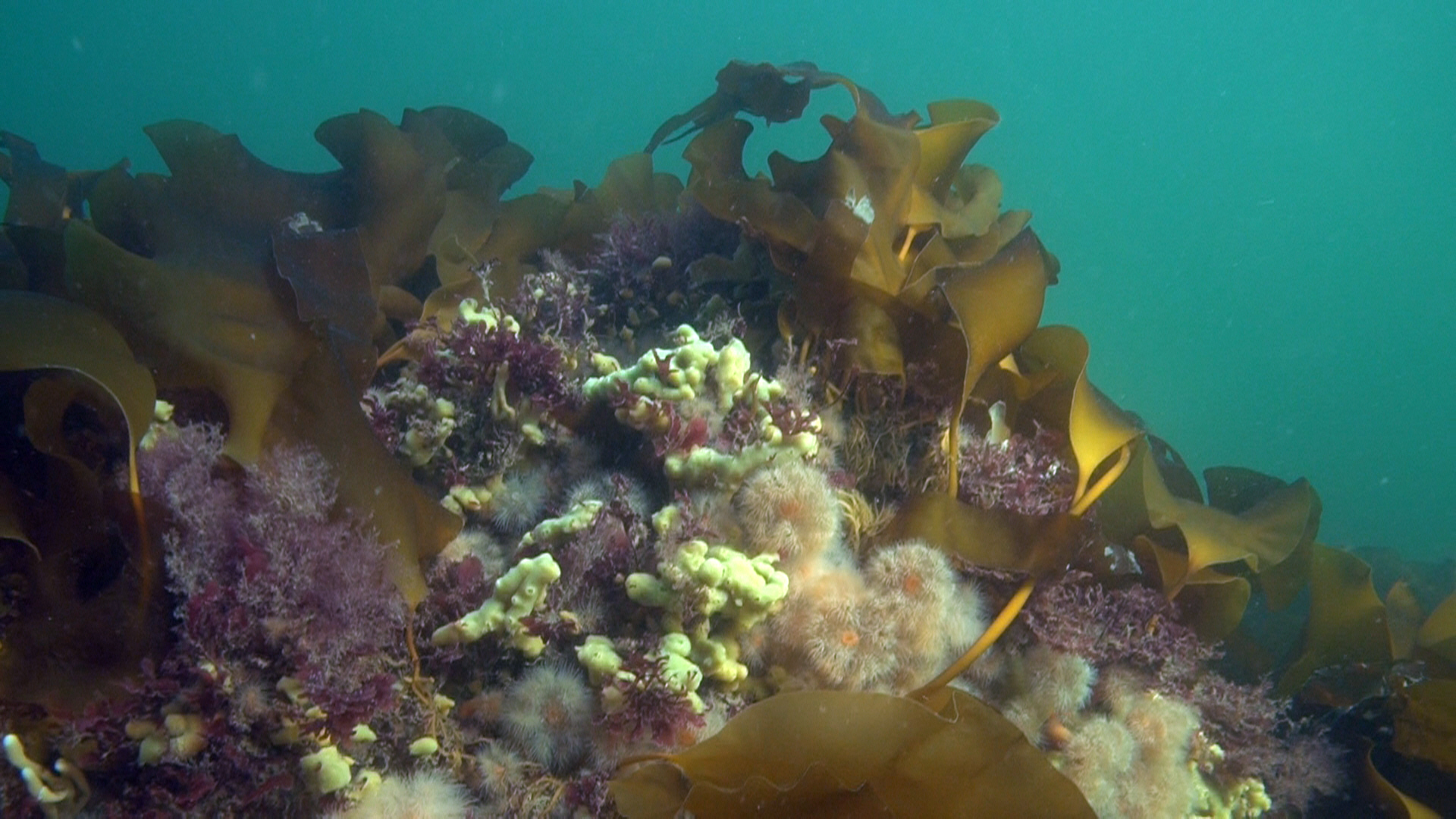A marine-friendly boost for the Old Little Belt Bridge
In 2014, a large cave-forming stone reef was established on the seabed under the Old Little Belt Bridge as part of a marine-friendly solution to reinforce the bridge. Banedanmark placed 130,000 tons of stone on the seabed, which has given new life to the area. To this day, the seabed in Lillebælt is still missing many stones because they have been fished up for decades for use in bridge construction and port facilities. Today, 10 years later, the large reef has created a rich natural environment where wildlife thrives due to its location in deep water with strong currents – ideal conditions for many marine species. The movie below shows the development of the stone reefs since 2014. Marine biologist and commercial diver Søren Larsen recorded and edited the film. Søren Larsen is a dedicated communicator with a passion for conveying the secrets of the sea to a wide audience, and he has followed the stone reefs under the Old Little Belt Bridge over the years.
Interpretive stone reefs make nature accessible
To give more people the opportunity to experience the marine life around the stone reefs, Middelfart Municipality decided to establish two interpretive stone reefs closer to the coast. These are located at Søbadet and Dykkerklubben and are aimed at both experienced divers and beginners. Signs and changing facilities have been set up to ensure easy access, while an underwater trail at Kongebro Harbor allows snorkelers to learn about life on the reefs in a safe environment. With up to 30,000 visitors a year, the stone reefs at the Little Belt Bridge have become one of Denmark’s most visited diving destinations.
Oases of the sea: The importance of stone reefs
Stone reefs are essential to the marine ecosystem as they create hard bottom conditions that many plants and animals depend on. Marine plants, macroalgae, can only grow on rocks, so if there are no rocks, there are no underwater forests. Together with the burrows that form between the rocks, macroalgae provide habitats for fish fry, lobsters and crabs. The reefs are also important for marine mammals such as seals and porpoises, which are often seen in the area hunting for food. Restoring stone reefs like those in Lillebælt is a great benefit for biodiversity. When stones are placed back on the seabed, nature itself begins to re-establish life – and the results are impressive. The stone reefs under the Old Little Belt Bridge are a shining example of how nature restoration can create new habitats and strengthen marine life. That’s why we’re particularly pleased that a local effort is now also becoming a national priority, as the Ministry of the Environment announced last week that DKK 11.3 million has been allocated for the restoration of marine nature in Lillebælt and Øresund through marine national parks.


